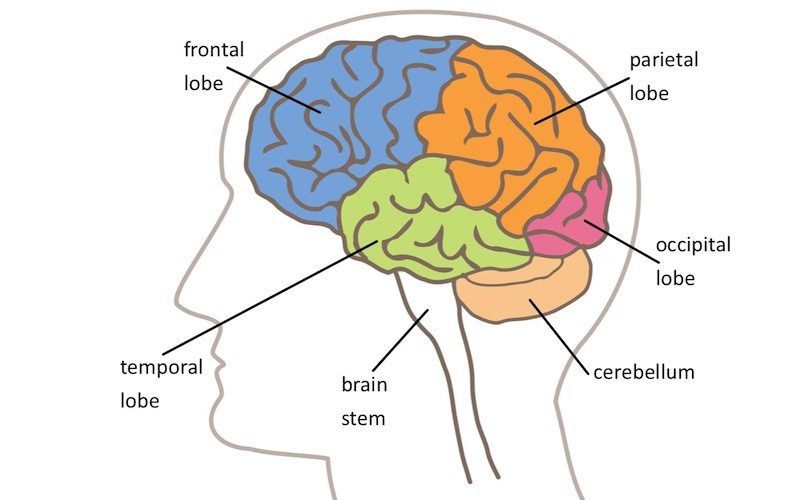Brain
Episode #1 of the course “How the human body works”
The human brain is a gray organ inside the head. It weighs about two pounds and begins developing in the early stages of fetal gestation, becoming connected to the rest of the body through the central nervous system. The brain is the storage and instruction center for all physical function, including everything from movement to memory.
Faster than a super-computer and with more storage and capacity than science currently understands, the brain is one of the most delicate and fascinating of human organs. Although some of what the brain does is consciously controlled, like walking, talking, or eating, some of what it controls are subconscious body processes like the heartbeat and internal organ function.
Scientists divide the surface of the brain, called the cerebral cortex, into 4 sections, called lobes, which are responsible for a variety of functions. In charge of unconscious processes is the brain stem, located at the base of the neck. The back of the brain, or occipital lobe, is responsible for processing visual information from the eyes. On either side of the head, above the ears, are the parietal lobes, which contain neurons that receive sensory information from the skin and tongue, and processes sensory information from the ears and eyes that are received in other lobes. The major sensory inputs from the skin (touch, temperature, and pain receptors) relay through the thalamus to parietal lobe.
The frontal lobe behind the forehead is the “human” part of the brain responsible for decision-making, complex problem-solving, motor functions, memory, and impulse control. The temporal lobeis located behind your ears and extends to both sides of the brain. It plays an important role in organizing sensory input, auditory perception, language and speech production, as well as memory association and formation.
It’s difficult for scientists to study the brain’s functions. Some discoveries are made when people suffer brain injuries or are born with neurodegenerative disorders, because brain tissue does not re-grow once damaged. By studying people with damaged brains, neurologists have been able to better understand which areas of the brain control human behaviors. The use of functional magnetic resonance imaging (or fMRI) is a common non-invasive technique used to understand how the brain functions. The better medical professionals understand how the brain is put together, the better they can repair damaged brains and improve lives.
Share with friends

